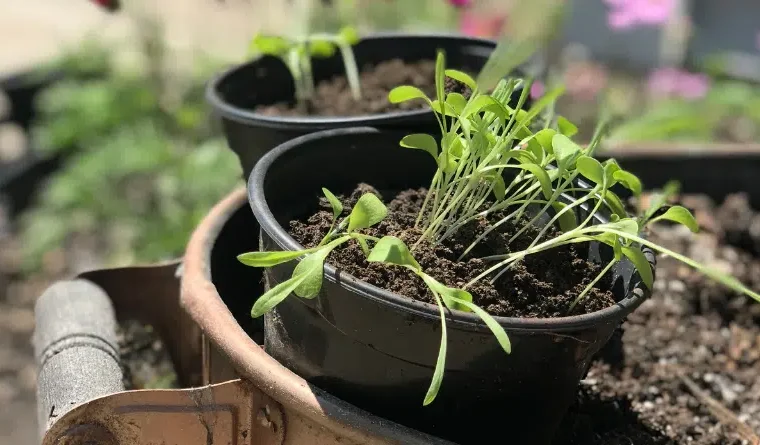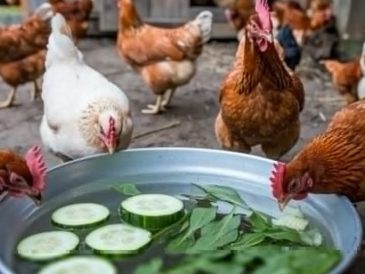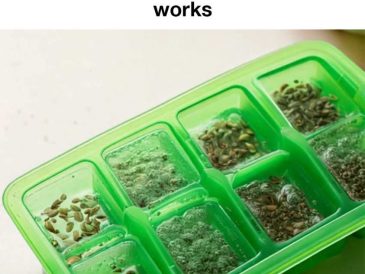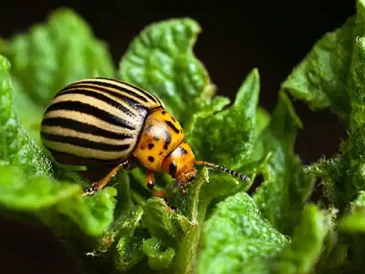March is an exciting time for gardeners as it marks the transition from winter to spring.
With longer days and rising temperatures, your garden begins to wake up, making it the perfect time to prepare for a lush and thriving growing season.
Whether you’re an experienced gardener or a beginner, here are seven essential gardening tasks to do in March to ensure a healthy and productive garden.
1. Start Seeds Indoors for Early Planting
March is the ideal time to start seeds indoors for vegetables, herbs, and flowers that need a longer growing season.
What to Do:
- Choose seeds such as tomatoes, peppers, eggplants, and lettuce.
- Use seed trays or small pots with well-draining soil.
- Keep seeds in a warm, sunny location (or under grow lights).
- Water lightly and maintain consistent moisture.
- Once seedlings develop their first true leaves, transplant them into larger pots before moving outdoors in April or May.
Why This Matters:
- Gives plants a head start before the last frost.
- Ensures stronger root development for better outdoor growth.
- Extends the growing season, leading to earlier harvests.
2. Prune Trees, Shrubs, and Roses
March is the best time to prune dormant trees, shrubs, and roses before new growth emerges.
What to Do:
- Remove dead, diseased, or damaged branches.
- Shape plants by cutting back overgrown sections.
- Prune fruit trees to improve air circulation and encourage fruit production.
- For roses, cut back old wood to promote healthy flowering.
Why This Matters:
- Reduces the risk of pest infestations and diseases.
- Encourages new growth and improved structure.
- Helps plants produce more flowers and fruit.
3. Prepare Garden Beds for Spring Planting
Before you plant, it’s essential to prepare your soil for the upcoming growing season.
What to Do:
- Clear debris such as fallen leaves, weeds, and dead plants.
- Turn the soil with a garden fork or tiller to loosen compacted dirt.
- Add organic matter like compost, aged manure, or peat moss.
- Test soil pH and adjust accordingly with lime (to raise pH) or sulfur (to lower pH).
- Apply a balanced fertilizer to enrich nutrients before planting.
Why This Matters:
- Provides a nutrient-rich environment for new plants.
- Improves soil aeration and drainage.
- Reduces weed competition by disturbing weed seeds before they sprout.
4. Plant Cool-Season Vegetables and Flowers
March is the perfect time to plant cool-season crops and flowers that thrive in early spring.
What to Do:
- Directly sow seeds of lettuce, spinach, kale, radishes, and carrots.
- Plant onion sets, garlic, and early potatoes.
- Add cold-tolerant flowers like pansies, violas, and snapdragons.
- Cover tender seedlings with frost cloths if late frosts occur.
Why This Matters:
- Maximizes early spring harvests before summer crops take over.
- Helps establish strong root systems in cool temperatures.
- Adds color and beauty to your garden while preventing soil erosion.
5. Mulch and Weed Garden Beds
Weeds begin to sprout in March, so it’s crucial to control them early before they spread.
What to Do:
- Apply a 2-3 inch layer of mulch (such as wood chips, straw, or shredded leaves).
- Pull emerging weeds by hand before they establish strong roots.
- Use landscape fabric or cardboard under mulch to suppress weeds.
- Mulch around trees, shrubs, and perennials to retain soil moisture.
Why This Matters:
- Prevents weed growth by blocking sunlight.
- Retains moisture and reduces the need for frequent watering.
- Regulates soil temperature and protects plant roots.
6. Start Composting or Refresh Your Compost Pile
March is a great time to start a compost pile or refresh an existing one to create rich organic matter for your garden.
What to Do:
- Collect kitchen scraps (vegetable peels, coffee grounds, eggshells).
- Add yard waste like grass clippings, leaves, and small branches.
- Turn the compost every few weeks to aerate and speed up decomposition.
- Ensure a good balance of “greens” (nitrogen-rich materials) and “browns” (carbon-rich materials).
Why This Matters:
- Creates free, nutrient-dense compost for healthier plants.
- Reduces household waste and landfill contributions.
- Improves soil structure, moisture retention, and fertility.
7. Inspect and Maintain Gardening Tools
Having well-maintained tools ensures efficiency and prevents damage to plants.
What to Do:
- Clean pruners, shovels, and rakes to remove dirt and rust.
- Sharpen shears, hoes, and lawnmower blades for precise cuts.
- Oil metal parts to prevent rusting.
- Replace worn-out gloves, hoses, and watering cans.
Why This Matters:
- Prevents the spread of plant diseases.
- Makes gardening easier and more effective.
- Extends the lifespan of your gardening equipment.
March is a crucial month for setting up your garden for success.
By starting seeds indoors, pruning, preparing soil, planting cool-season crops, mulching, composting, and maintaining tools, you’ll create the perfect foundation for a thriving and productive garden.





